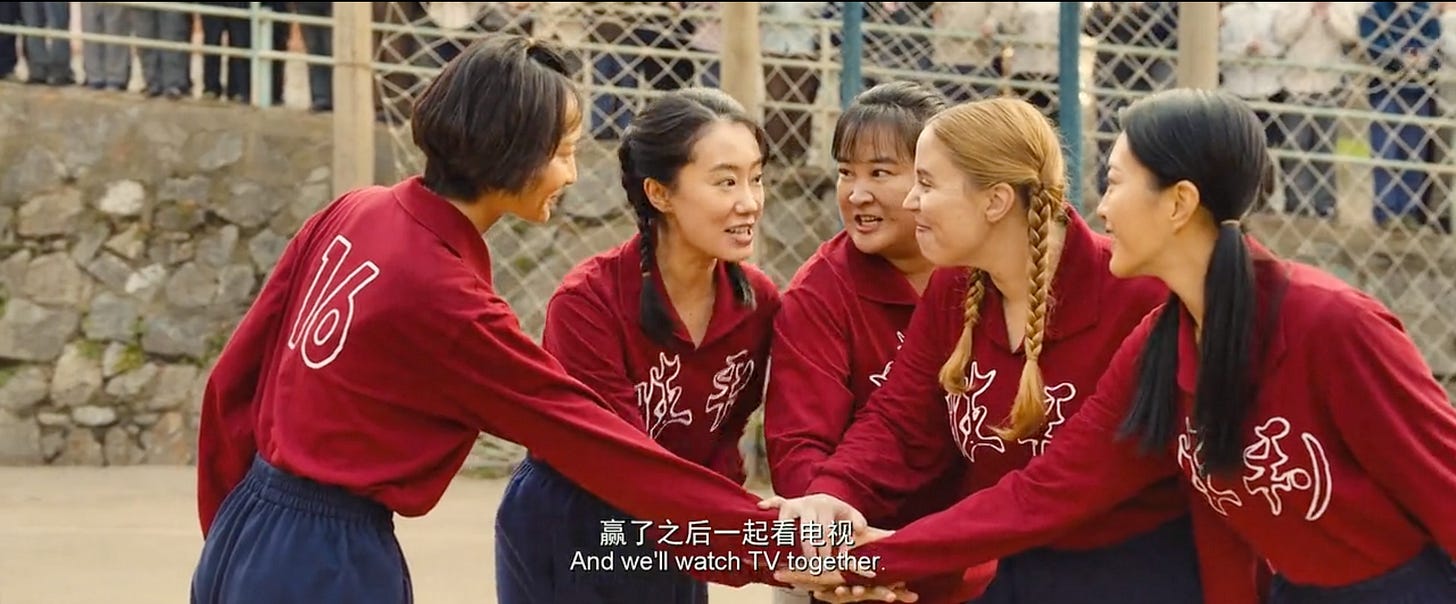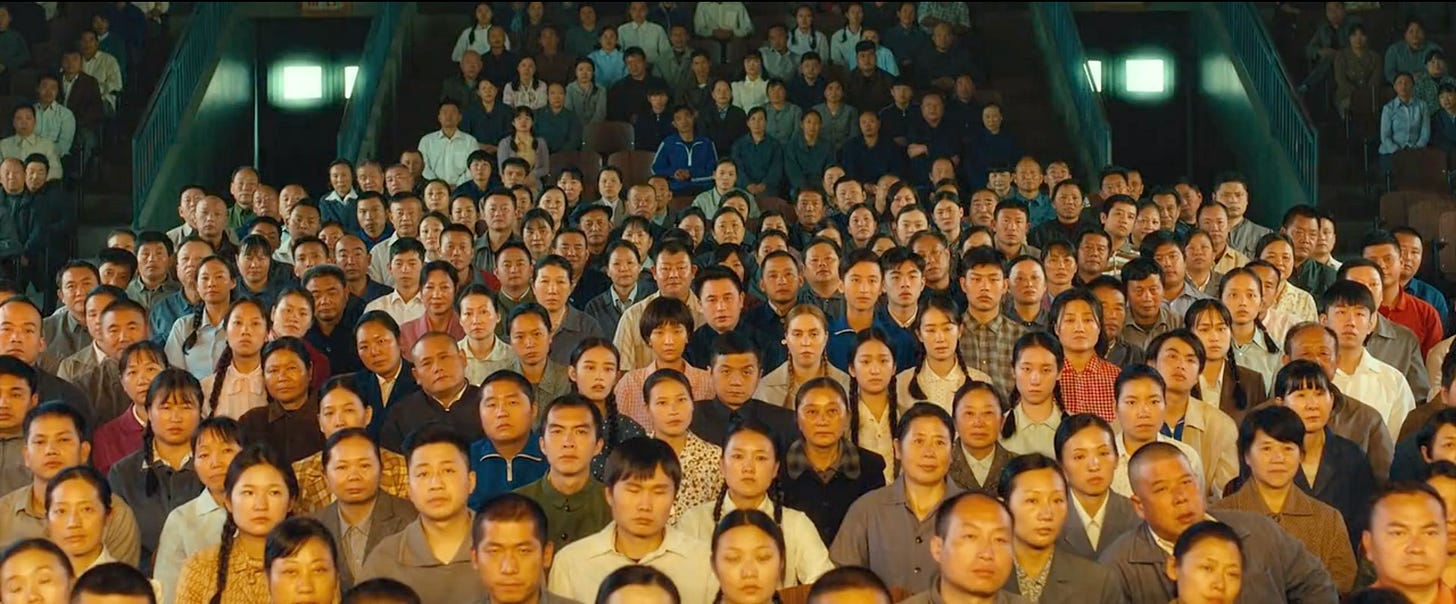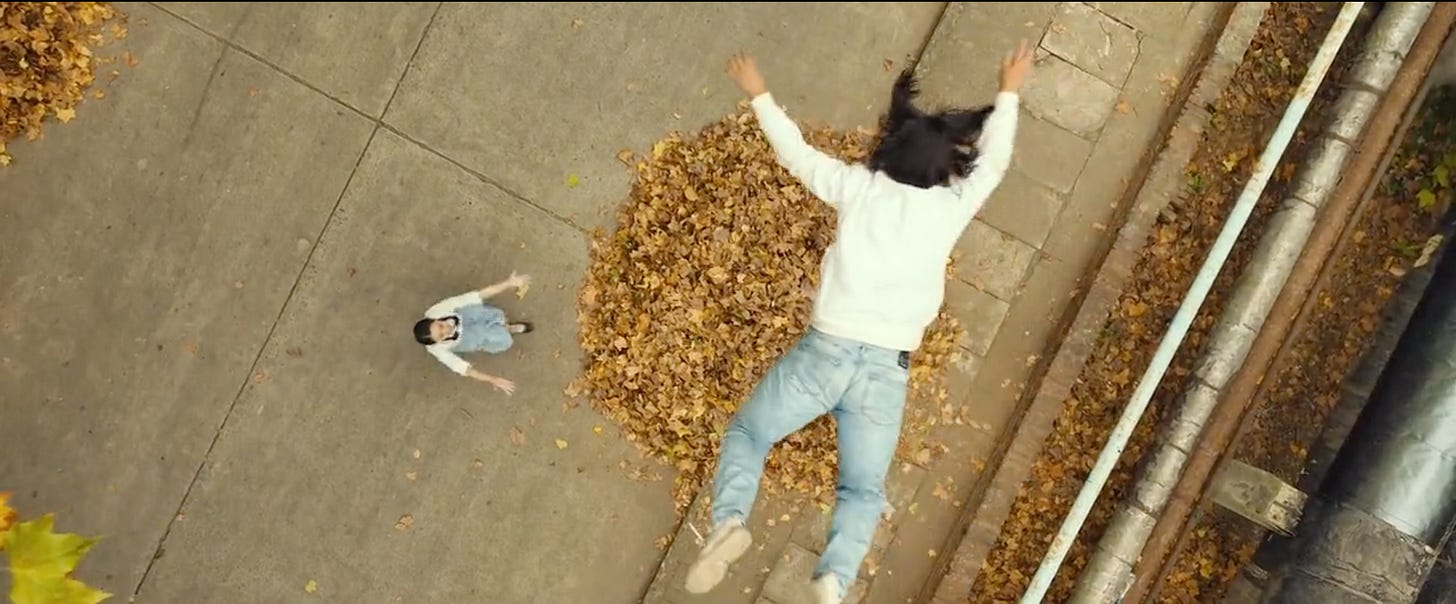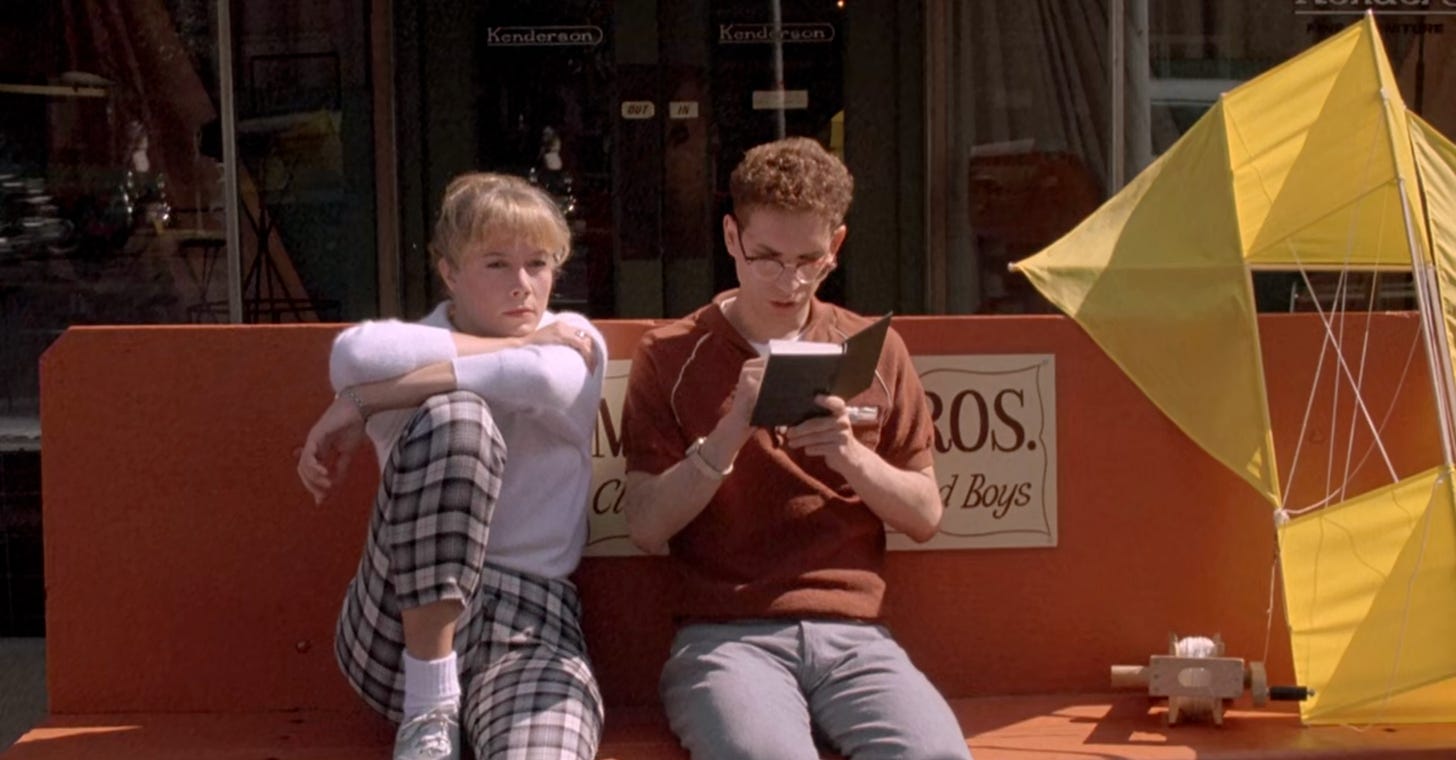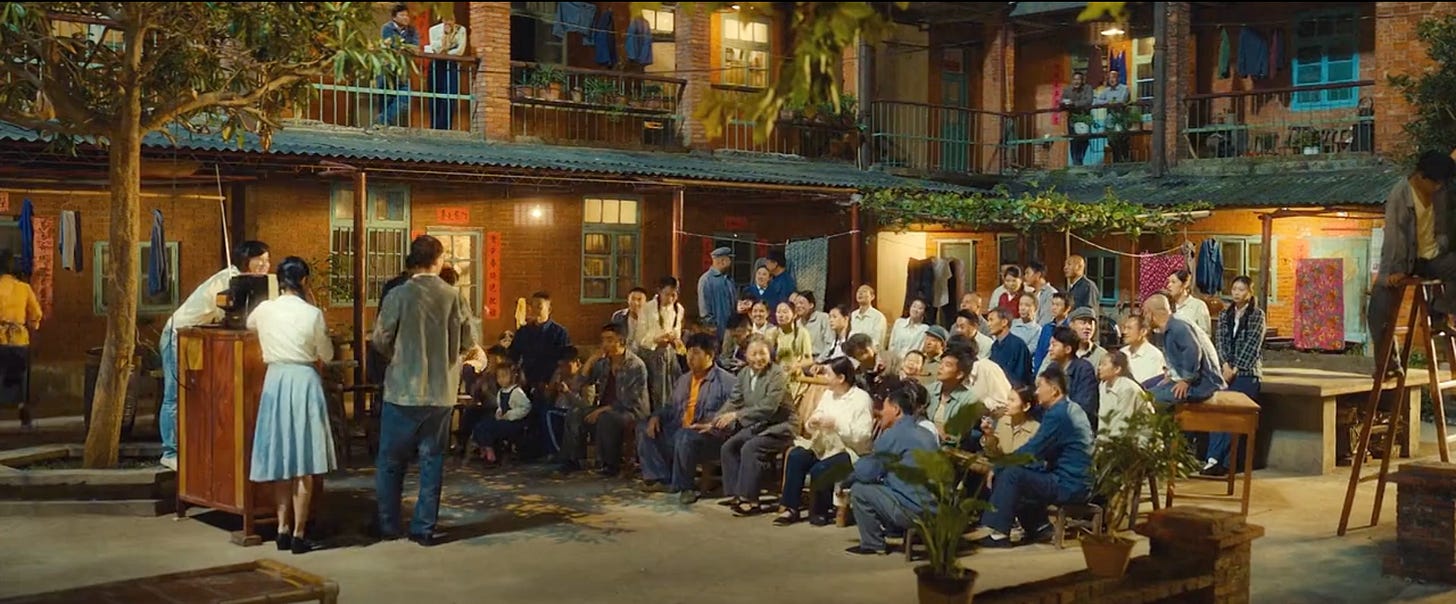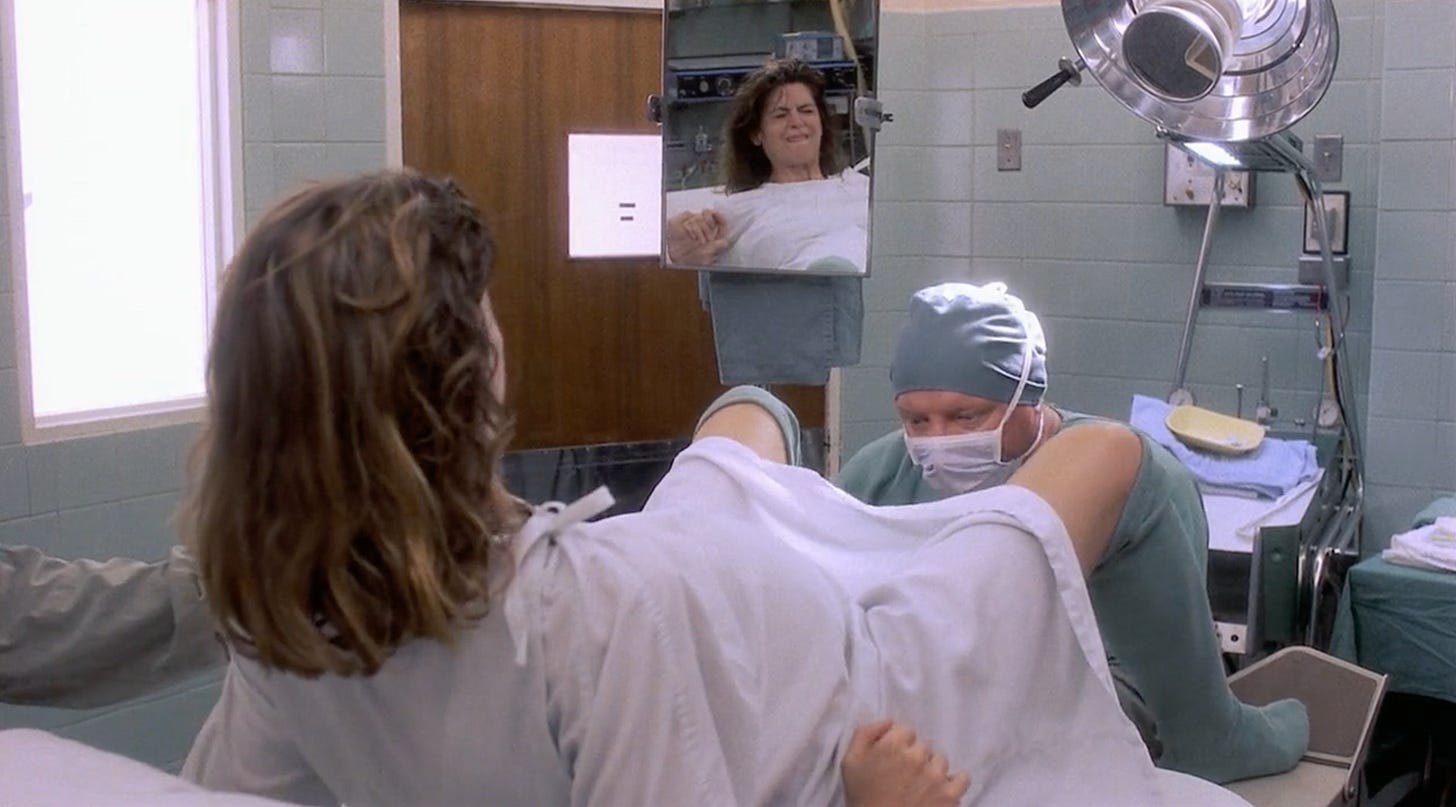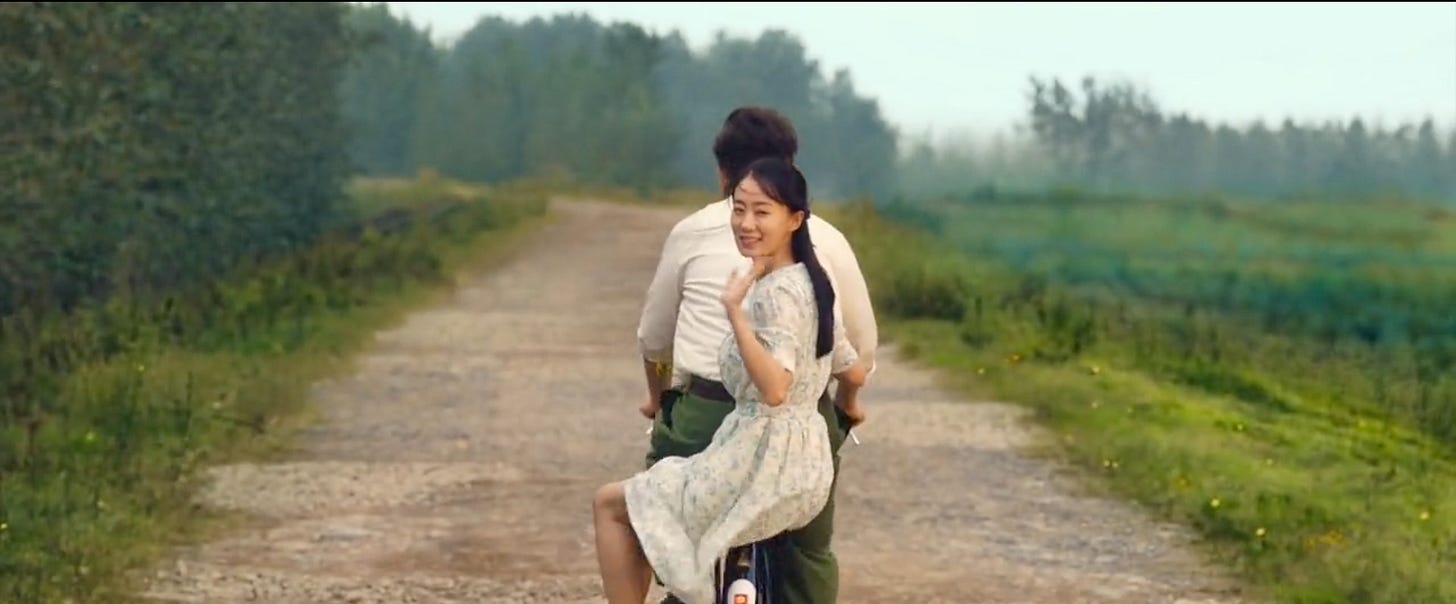It is astonishing that Hi, Mom is the all-time highest-grossing movie by a woman director but has attracted so little attention in Europe and the US. Usually, in these regions, cultural commentators are quick to celebrate such landmark achievements, each a vital contribution to the pixel-by-pixel correction of the patriarchy's historical erasure of women's vision and voice. However, Mom defies many privileged narratives, not least around the representation of women's agency in movies. Power, by masculine standards, is the conventional measure of women's mettle—physical strength, financial heft, intractability, and sex charm seduction. These criteria apply in contending successes by women directors in the top three most successful films, Wonder Woman (Patty Jenkins 2017) and Look Who's Talking (Amy Heckerling 1989). In Hi, Mom, there is demure collective empowerment where resilience is adaptability, magnanimity, and sisterhood.
Mom is a time-travel caper in the tradition of Peggy Sue Got Married (Francis Ford Coppola 1986). Like the Coppola movie, Hi, Mom's narrative starts at a reunion party. The gathering brings together a group whose social dynamic anticipates the drama to be enacted by their younger selves. The spotlight shines on perceived life successes and those who fall short, such as Hi, Mom's protagonist Ling. Taking the lead and directing, Ling is Jia Ling, the celebrity Xiangsheng (相声 cross-talk) comedienne; her style analogous to a marriage of Dawn French and Lou Costello. The movie's quick-fire banter drives a plot developed from one of Ling's short sketches.
In movies, to slip between times and places is easy. Memories, experiences, and dreams can coexist and be interchangeable, inviting an intimate dialogue across time with as little as a cross-dissolve. When time shift is central to the plot, the transition needs to be marked, such as by the rattling control panels of George Pal's 1965 adaptation of HG Wells's novel “The Time Machine” (1895) or other apparatus, such as the flux capacitor of Robert Zemeckis' Back to the Future (1985). In Hi, Mom, as time scrolls back, familiar grey documentary images of workers streaming out at the end of a shift flush and glow like animated Ektachrome, a zany cinematic quote from The Wizard of Oz (Victor Fleming 1939). Ling's arrival in the past also shadows Oz's protagonist Dorothy (Judy Garland), who falls through the clouds to arrive, landing on the Wicked Witch of the East. Ling falls and lands on her future mother, Li Huan Ying (Zhang Xiaofei 张小斐).
For time-travellers seeking to resolve dilemmas in the present, the cinematic lens of history is enabling. Ling fits in easily with a past imagined with conventional nostalgia as more simple and more vibrant than today. By contrast, Peggy Sue's return is darker, inflected by mature desire. Back in school, Peggy Sue's sophistication and experience give her control. Time travel anomalies are played for laughs, such as Sue’s adult sexuality in a kid's body and her knowledge of future innovations, from microchips to pantihose. Ling's feelings of being gawky and her lack of sophistication transport back, giving her cache in a less severely judgmental era. Ling identifies as “a lousy daughter,” never good enough for her mom. But now, she has a second chance. In the past, she fits in and is self-possessed. But, her mission is not self-improvement but to affect the fortunes of her future family. To do this, she believes she has to change the outcome of a volleyball tournament, 'back in the day.'
The 'day' is the 80's, post-Mao, Deng Xiaoping's presidency. As a misfit anyway, being out of place in time is no big deal for Ling. However, moulding and reforming history according to her future perspectives clashes with the situation she finds where people harbour divergent future aspirations. They don't need to be improved and don't care about second chances. Instead of benefiting from her privileged foresight, Ling learns from others' resilience and honesty. She learns winning doesn't correlate with opposition, crushing and humiliating competitors. To win can be an expression of unity.
After her fall, stunned but not injured, Ling is taken to an infirmary. Mother and future daughter become friends. In these scenes, with their awkward encounters and mistaken identities, Ling shuns the potential for irony, a device that flatters an audience whose privileged knowledge allows them to chuckle at others' innocence. Ling favours slapstick as her comedic strategy, animating the audience's identification with the situation and empathy for its participants.
The following scenes revolve around the social dynamics of a sprawling chemical factory. The factory complex is a melting pot in a period of social hyper-mobility where urbane sophistication and rough-hewn rural perspectives coexist. These are represented in funny moments of clunky exchange sympathetically revealing diverse characters, from farm labourers and scavengers to poets. These character vignettes are staged as Ling and Ying try to whip up support for their volleyball team. However, history repeats itself, and the match is over and lost for a second time by the movie's halfway point.
The story's second half concerns Ling's attempts to introduce Ying to a high-status match, the factory manager's son, Shen Guang Lin (Teng Shen 沈腾). A series of painfully awkward romantic scenes, all ending in madcap disasters, are connected by ongoing rehearsals for a vaudeville performance. The final show is presented as a nested drama where staged slapstick explicitly invites the on-screen audience to revise their opinion of Lin, hitherto regarded as obnoxiously privileged. Through her misguided attempts to alter and improve her mother's destiny, Ling learns that the past is neither simple nor transparent, even with the benefit of foresight. In fact, a significant twist at the movie's end confounds assumptions and upends Ling's latent negativity.
Unlike Peggy Sue, who remains aloof, brandishing her maturity and wielding it through assertive relationships and confident put-downs, Ling integrates with what's going on. At the factory, women are central. Male characters act as adaptive agents. In a significant manifestation of this shift in social order and control, Ling presents a counternarrative in opposition to the coercion of an alpha-male group. A trio of hapless hoodlums transition, becoming allies and creative agents. Their fault is not of character but of restricted vision. They make their initial appearance attempting to influence a dispute over the control of a brand-new television; the device appears several times as a metaphor for stretching horizons. Ling argues that they need to raise their game. They should set their ambition higher than dominating the factory. She paints a vivid picture of city gangs whose leaders make a difference in their neighbourhood, subtly shifting the men's attitude from aggression to nurture and development. The same ethos is repeated when romantic rivalries adapt to respect lovers’ choices and view happiness as beneficial beyond individual needs. Realignments sustain harmonious and affectionate long-term relationships that Ling revaluates in flashbacks to the movie's present.
Hi, Mom confronts conventions that equate women's empowerment with physical or libidinal control. Because these oppressions are ingrained in culture, they are adaptable. Energetic violence, such as Diana's kick-ass magic force as Wonder Woman, associates her with the binary stereotype of imperative and submissive in hetronormative masculinity. The same power bifurcation means female characters can conform to typically masculine sexual urgency. The ‘amazonian’ trope of women’s sex replicates male force, endurance, and conquest. This is seen in Look Who's Talking, as the protagonist, Mollie, is lascivious. She cannot resist the urge to fuck her married client. Her sex is mediated by the commentary of a cajoling male voice impregnated in her body, first a sperm and later a developing baby.
Ling's vision of women's agency is in the title “Mom.” This mom is a multi-faceted nexus of strength, embodying expressions of maternal protection, supervision, heedfulness, and concern. Ling realizes that she has misread her mother's desires and expectations, equating them with conquests, both amorous and on the volleyball court. Success or failure, winning or losing—it doesn't matter. Connectedness, mutuality, and advancing together is the prize. From the start, when Ling tumbles from the sky, her mother breaks her fall, and others close by don't cry for help. They take action.
Since Laura Mulvey wrote, “In a world ordered by sexual imbalance, pleasure in looking has been split between active/male and passive/female. The determining male gaze projects its phantasy onto the female form which is styled accordingly.” (Mulvey 1975) women directors have wrestled with the dilemma of the female protagonist forced to usurp male exertion if they want to engage in society. Or they can be passive, with maternity the preeminent mark of this antithesis and female quiescence. Nowhere is this trope more apparent than in the birth scene when women are presented as temporarily pathologized and helpless. For example, in Look Whose Talking, despite the female lead surrogate masculinity, expressed as rage and impatience, competent men take over at the moment she gives birth, and she is shown to be inherently helpless.
Hi, Mom’s success in Asia and near-total erasure from western screens lays bare cultures that still perceive reciprocity and nurture as impotence.
Notes:
Laura Mulvey, Visual Pleasure and Narrative Cinema, Screen, Volume 16, Issue 3, Autumn 1975, Pages 6–18, https://doi.org/10.1093/screen/16.3.6

